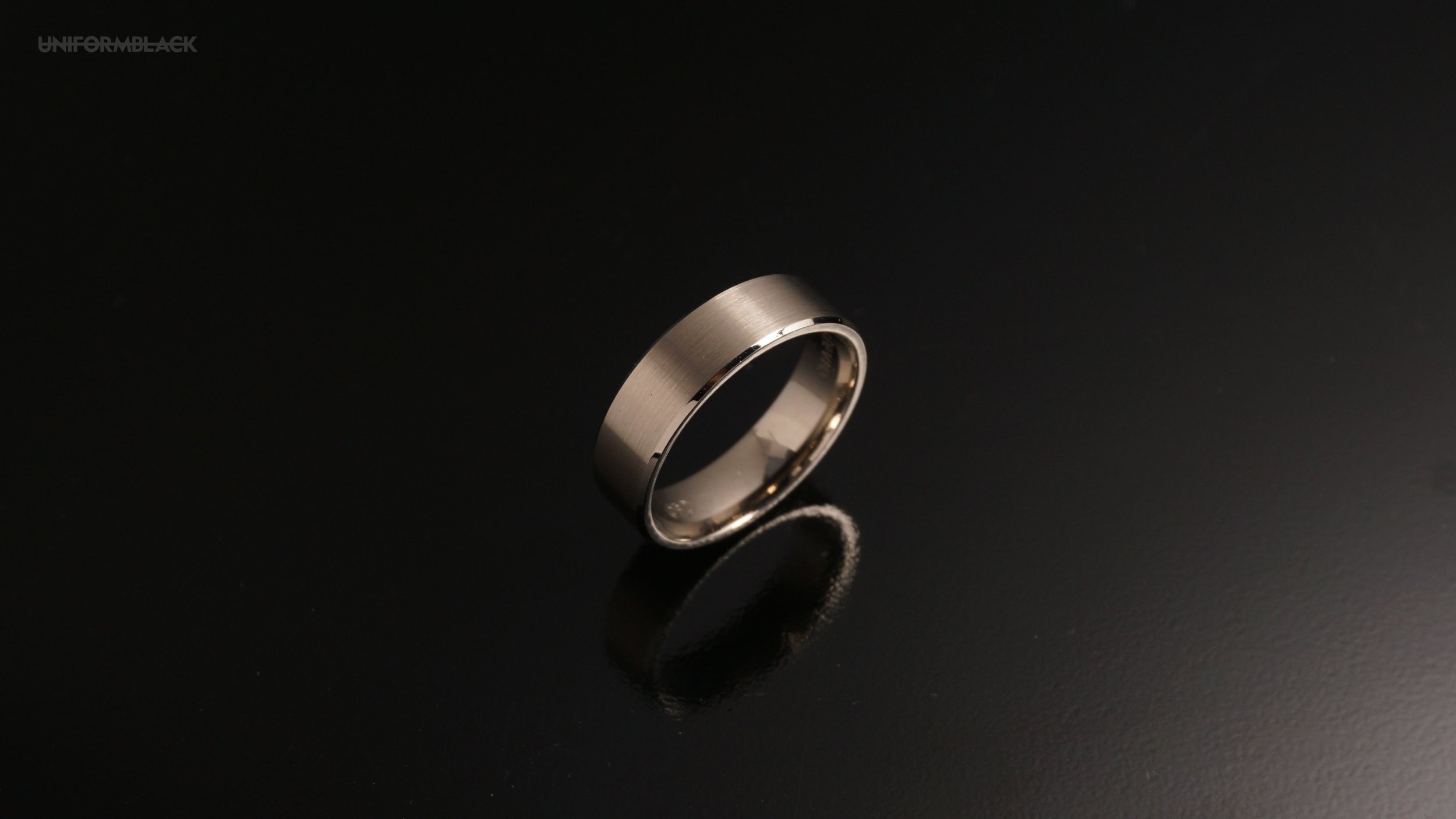
custom madewhite gold rings
precision Made just for you in Melbourne.
The basics of white gold.
The visual difference between 18ct and 9ct white gold
18ct on the left, 9ct on the right.
18CT has a darker, warmer tone.
9CT has an appearance closer to Sterling silver.
We Don’t rhodium plate our white gold.
I always say white gold doesn’t really exist. White gold is a special alloy (mixture) of gold and other stuff.
Gold is always yellow in colour, but if you melt it down and add palladium to it, it turns the gold white.
First of all, carat refers to the gold content of the metal.
An 18ct white gold ring is made up of 75% gold, with the remaining 25% being a mixture of other metals.
The quality of the white gold is determined by that remaining 25%.
Palladium creates the purest white colour, but is unfortunately rather expensive.
It’s actually more expensive than gold itself.
This is why white gold is more expensive than other golds.
We also offer white gold in a 9 carat option which is 37.5% gold. It is a starkly different colour, closer to sterling silver. The two carats can be combined to create interesting two tone designs.
High quality white golds like ours contain a high percentage of palladium.
There are cheaper alternatives that will be less white and possibly contain nickel instead of palladium, just so you’re aware.
This is a very important distinction to make.
Most jewellery stores will show you white gold with a coating of another metal on top called rhodium.
This plating covers up the actual colour of the white gold, so you’re not actually seeing it at all.
Rhodium has a very white, bright, shiny finish in general.
Over time, this plating wears off and your ring will appear to “yellow” over time.
That’s just the actual colour of the white gold coming through.
You’re then meant to bring it back and pay to have it re-coated with rhodium.
I made a decision years ago not to do rhodium plating at all. It’s deceptive, and there are no real benefits. If you prefer a whiter, brighter metal, platinum is practically the same price as 18ct white gold now. Platinum doesn’t require re-plating.
Uncoated white gold is beautiful in its own way. It has a warmer tone which many clients prefer itover the stark white colour of rhodium plating or platinum.
See them in person and judge them for yourself in our Melbourne showroom.
How Uniform Black Makes White Gold Rings
An engineering approach.
First,The traditional way
How Most do it
In short, this involves melting a batch of alloyed white gold into a “button”.
This is then rolled out like pizza dough through steel rolling pins multiple times.
This hardens the metal and removes internal imperfections from the melting process.
After rolling it out enough, you end up with a strip of white gold.
This then needs to be shaped into a ring
The metal then has to be softened via annealing so it can be bent into a ring shape (loss of durability), and a join is made to create the ring.
This ring is then shaped by hand using files and various tools to achieve the intended result.
A different and better way
How We do it.
We acquire a round ingot from a specialist manufacturer of precious metals.
They form the white gold into solid round bars using a hot forging process.
This aligns the crystal structure of the metal perfectly and eliminates imperfections. A portion is then cut off the bar.
Once it is in this form, it is then machined in-house on a lathe to the final dimensions.
This means our rings have no joins in them, as the metal is formed as a seamless solid bar to begin with.
No weak points.
By using machining techniques, it allows dimensional accuracy to be achieved, and fine details such as bevelled/chamfered edges, grooves, steps et cetera to be applied to the ring.
These are not possible with traditional techniques to our degree of accuracy.
This would not be possible by traditional techniques.


